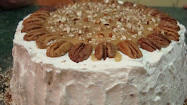(a big thank-you to my mother, Tina Fast, for sorting through her memory and sharing the wealth she found there with me.)
You take your seat at the funeral table, hold up your cup to be filled with coffee. You reach for a bun and then for a zockastetj. You dip this hardened constellation of a thousand sugary fragments in your cream-whitened coffee. Only when saturation threatens to disintegrate its togetherness do you lift it to your mouth. An allotment of sweetness in the bitterness of grief.
 |
| Blumenort Kleine Gemeinde Church. Built by my great uncles Cornelius R., Henry R. and Peter R. Plett in 1918. |
A utilitarian sacredness characterized this church-before-my-memory. A sanctuary in the normal course of days intended for worship: prayers, hymns, a sermon. But it could easily be transformed from sanctuary to cenacle. Benches pushed aside, tables assembled, the tops--wide boards joined together with cross-slats--laid solidly on supporting sawhorses. For a wedding, the bustle of work required to rearrange the room will have had a celebratory flair to it. But for a funeral, a more sober, determined flurry tempered by loss.
Men (I’ve no doubt it was men) hauled the miagrope—a fifty gallon cast iron cauldron with a built-in fire box used to heat water for coffee—from the barn behind the church and set it up in the prädja stowtje, transforming this ministerial station into the only kitchen the church ever had. A few women baked tweebuck the day prior to the funeral, taking care to shape the buns as miniatures of the big, hearty ones they more regularly baked to feed their families. Someone was asked to buy coffee and zockastetja.
Immediately following the funeral service, while most of the funeral-goers gathered in the cemetery next to the church, tables had to be set up, coffee made, funeral fare laid out. In the prädja stowtje, the cauldron-heated water was ladled into milk cans turned coffee urns. From here the milk cans were carried to the tables and the coffee poured into large aluminum kettles, ready to be served. Funeral faspas were simple meals and only a cup was needed at each place setting. A bowl of tweebuck, a pitcher of cream, a dish of zockastetja for each table.
And permeating all this bustle of activity, a simple wooden box palled with black fabric lowered into the ground, shovel upon shovel of dirt returned to the grave, a spirit commended, a sorrow shared.
As is customary in a small university seminar class, everyone introduced themselves on the first day. I immediately recognized her name as Mennonite, as of course she did mine. But it wasn’t until later in the term that I mentioned that I was from Blumenort. She knew Blumenort well as she had spent a summer there living with her great aunts. And she started talking about funerals, coffee and sugar cubes, she even used the Low German word zockastetja. In that cultural fragment she set adrift with her words, lay more than an old-fashioned custom we both recognized. It pulled back through my losses, my father, uncles and aunts, some whom I loved, some whom I feared and some whom I hardly knew, my grandparents, a friend’s father, a thirteen-year old school mate, a grandmother I only dimly remembered. It pulled back further through my losses, to a time before my time, through the generations of sorrows that Blumenort has known. This gesture towards ritual—coffee and sugar cubes—that is so much a part of my history, a reminder of what I have lost, a remembrance of what is mine.
*Ministers’ room. This was a room reserved for the ministers to collect themselves and their thoughts before they filed through the congregation to take their seats on the dais at the front of the church.
(Photo taken from Royden Loewen. Blumenort: A Mennonite Community in Transition, 1874-1982. Blumenort Mennonite Historical Society, 1983. Used with permission.)

















































